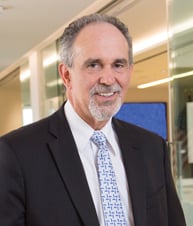
City of Los Angeles
City Council
Mobility Plan 2035 Approved
On August 11, 2015, the city council passed “Mobility Plan 2035,” a comprehensive revision of the 1999 Transportation Element of the General Plan. Mobility Plan 2035 constitutes a large shift in the city’s approach to transportation planning, as the plan encourages drivers to get out of their cars and use alternative modes of transportation. The plan’s key initiatives include: (1) establishing a network of complete streets that will promote safe and efficient transportation for pedestrians, bicyclists, transit riders, and vehicles; (2) using data to prioritize transportation decisions based on outcomes of safety, public health, equity, access, and social or economic benefits; (3) considering the strong link between land use and transportation; (4) embedding equity into transportation policies; (5) targeting greenhouse gas reductions through a more sustainable transportation system; (6) increasing the use of technology to provide real-time wayfinding, access to parking options, car shares, and bicycle shares; and (7) expanding the role of the street as a public place.
Under the plan, mass transit networks will be enhanced and streets will be modified to give priority to different modes of transportation. Some streets will be prioritized to protect bicyclists and pedestrians, while others will receive designated bus lanes or will be redesigned to move vehicle traffic more quickly. The Highways and Freeways Map has been updated to establish five arterial classifications that more closely reflect existing street dimensions.
The plan is controversial in some neighborhoods, as residents and drivers fear that replacing vehicle and parking lanes with bike or bus lanes will add to traffic headaches and hinder emergency vehicles. Supporters assert this shift is critical for the city to meet its goals to reduce greenhouse gas emissions, promote alternative modes of transportation, and increase safety for pedestrians, bicyclists, and drivers. The city council considered five motions to amend the plan to modify various street designations and to remove portions of the bikeway network; however, none of the motions passed. Councilmembers Paul Koretz and Gil Cedillo voted against the plan, but the remaining 12 councilmembers who were present passed the plan in full, and the motions were referred back to the Planning and Land Use Management (PLUM) and Transportation Committees for further study and consideration. Mayor Eric Garcetti must approve Mobility Plan 2035 before it is officially adopted into the city’s General Plan.
Department of City Planning
Clean Up Green Up Ordinance Recommended for Approval
On August 13, 2015, the City Planning Commission amended and recommended the city council approve the Clean Up Green Up (CUGU) ordinance establishing a new Supplemental Use District (SUD) in Boyle Heights, Pacoima/Sun Valley, and Wilmington. The CUGU ordinance will create new development standards for various industrial land uses and establishes a citywide conditional use for new oil refineries and existing refineries, expanding operations beyond current boundary lines. New public uses within 1,000 feet of a freeway will be required to post signage regarding health impacts related to exposure to vehicle exhaust and particulate matter. As reported in the May 2015 edition of Land Use Matters, the CUGU is opposed by a number of business owners and organizations. The PLUM Committee will review the proposed ordinance at a date to be determined before final review by the city council.
California Environmental Quality Act
City of San Diego v. Board of Trustees of the California State University (Cal., 8/3/15)
This case has relevance only to state agencies carrying out a project that called for the state agency to make a fair share payment toward off-site mitigation measures to avoid a significant environmental impact. The agency concluded that such mitigation was “infeasible” because it could only make a fair share payment if the legislature had made an appropriation for that specific purpose. The supreme court held that such an appropriation was not necessary and, therefore, the fair share payment was a feasible mitigation measure under CEQA.
This publication by Alston & Bird LLP provides a summary of significant developments to our clients and friends. It is intended to be informational and does not constitute legal advice regarding any specific situation. This material may also be considered attorney advertising under court rules of certain jurisdictions.

